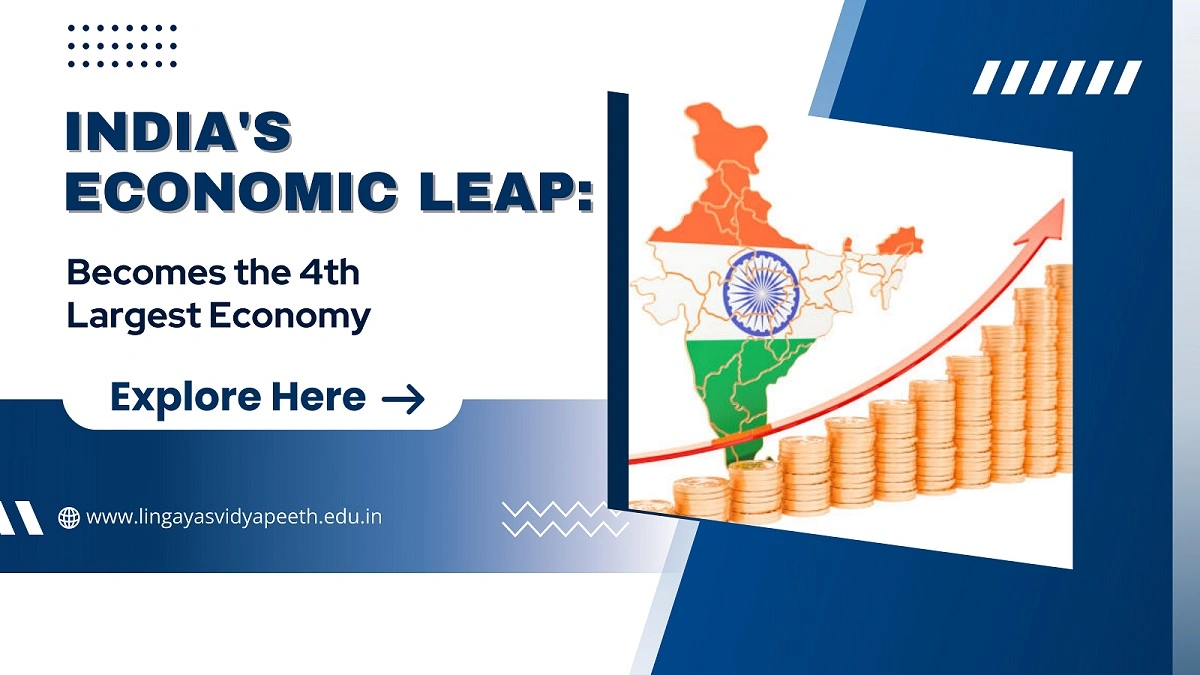Home » India’s Economic Leap: Becomes the 4th Largest Economy

In 2025, India’s economy reached a nominal GDP of $4.187 trillion, narrowly surpassing Japan’s $4.186 trillion, according to the IMF’s World Economic Outlook (April 2025). India’s new economic standing makes it the fourth largest worldwide, surpassed only by the United States ($30.507 trillion), China ($19.231 trillion), and Germany ($4.744 trillion). India was the fifth-largest economy, but its steady growth has now propelled it to the fourth spot, a moment of pride for the nation.
Understanding this milestone is crucial for students interested in economics, global affairs, or even future career opportunities. India’s rise reflects its growing influence in technology, manufacturing, and services, opening doors for jobs and innovation. It’s a chance to see how a developing nation can transform into a global powerhouse.
India’s climb to the fourth spot didn’t happen overnight. Several factors have fuelled this growth:
While India’s total GDP now exceeds Japan’s, there are key differences:
India’s journey doesn’t stop here. Experts predict it could overtake Germany to become the third-largest economy by 2028, with a projected GDP of $5.584 trillion compared to Germany’s $5.251 trillion. Here’s what’s driving this ambition:
Despite this achievement, India faces hurdles:
For students, India’s rise is a story of ambition and resilience. It shows how a nation with a large population and diverse challenges can compete with economic giants. As future leaders, you can contribute to this growth through innovation, entrepreneurship, or policy-making. Whether you’re studying economics, technology, or social sciences, this milestone is a reminder that India’s potential is vast—and you’re a part of it.
India’s ascent to the fourth-largest economy in 2025 is a testament to its hard work and strategic vision. With a GDP of $4.187 trillion, it has edged past Japan and set its sights on Germany. While challenges like per capita income and global trade uncertainties remain, India’s growth trajectory is inspiring. For students, this is more than just a number—it’s a call to engage with a nation on the rise and shape its future.
Also Read
Non-science Students to Become Commercial Pilots
India Improved Its HDI Ranking
Empowering Women in India Through Yashoda AI
From
Lingaya’s Vidyapeeth
Best university in Faridabad
RECENT POSTS
CATEGORIES
TAGS
Agriculture Agriculture future AI Architecture artificial intelligence Bachelor of Commerce BA English BA Psychology BTech AIML BTech CSE BTech cybersecurity BTech Engineering Business management career Career-Specific Education career guide career option career scope Civil engineering commerce and management Computer Science Computer science engineering Data science degree education Engineering Engineering students English Literature english program Fashion Design Fashion design course Higher Education Journalism journalism and mass communication law Law career Machine Learning mathematics MBA MBA specialization Mechanical Engineering Pharmacy Psychology Research and Development students
Nachauli, Jasana Road, Faridabad, Haryana
Address: C-72, Second Floor, Shivalik, Near Malviya Nagar,
Above HDFC Bank, New Delhi 110017
Landline No. - 011-46570515 / 45138169 / 41755703
Mobile No. - +91-7303152412 / +91-7303152420 / +91-9311321952
Toll Free: 1800-120-4613
Mobile : 8447744303 | 8447744304 | 8447744306 | 8447744309
8700003974 | 8700003411 | 8700003749
Copyrights © 1998 - 2025 Lingaya's Vidyapeeth (Deemed To Be University). All rights reserved.
LV only conducts physical/online verification of any document related to examination on the following email id:
It is important to note that the following email IDs and domains are fraudulent and do not belong to our university.